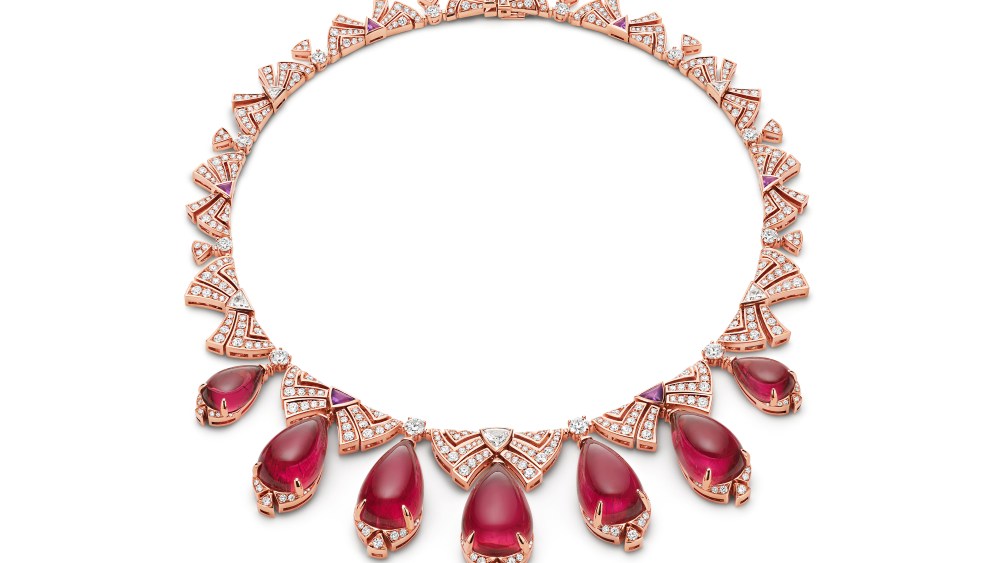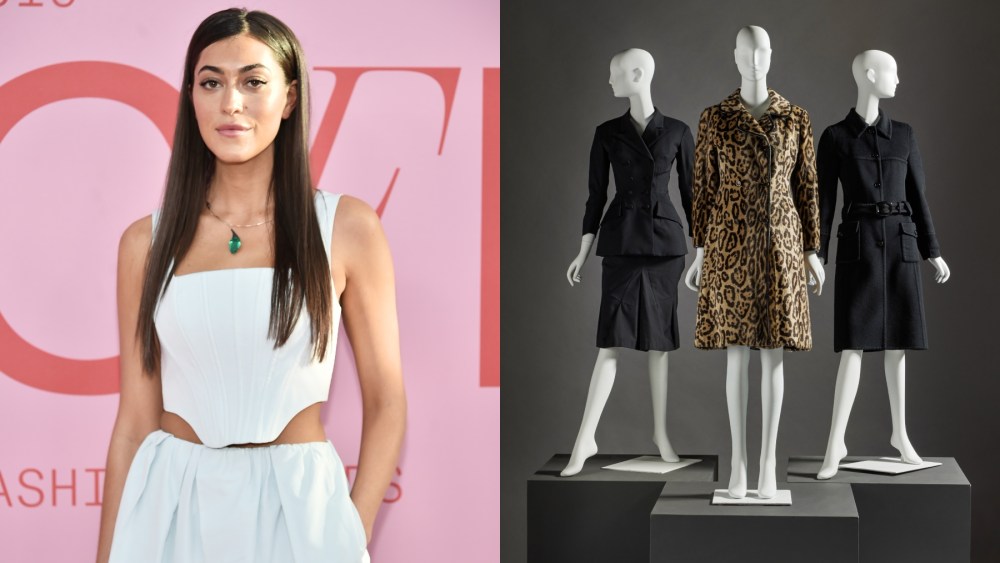MILAN – The luxury market is still resilient but not immune to the headwinds from economic and geopolitical uncertainties, according to Bain & Company and Altagamma.
Global luxury spending is expected to remain stable in 2025 at 1.44 trillion euros at constant exchange rates. At current exchange, it is forecast to decrease between 1 and 3 percent.
The most recent Bain-Altagamma Luxury Goods Worldwide Market Study presented in Milan today finds that a sequentially improving trajectory is expected to extend into 2026.
In an interview, Federica Levato, senior partner at Bain & Company and leader of the firm’s EMEA Fashion & Luxury practice, who co-authored the report, said the “overview is a mildly positive” one. The third quarter this year was better than expected and the fourth quarter is seen as critical.
You May Also Like
“Experiences and emotions become the primary driver of market growth after the shopping-spree era,” she said. The study reports a “tectonic shift” toward luxury experiences such as hospitality cruises and fine dining, reshaping the industry.
“The study is called ‘The Longevity Issue,’ so brands need to take action, to proactively make this a timeless industry and market, to [protect] their own longevity and that of customers, because now we are six generations buying into this market, and complexities are arising from serving so many different customers, such different product offer, and value propositions,” Levato said.
Sales of the personal luxury goods are expected to decrease 2 percent to 358 million euros in 2025 compared with 364 million euros in 2024, and are seen to be flat at constant exchange. While ultra-wealthy buyers are continuing to sustain demand for high-end luxury goods, aspirational consumers have pulled back, adding to the pressure on traditional luxury, according to the report.
In June, as reported, Bain and Altagamma saw three potential scenarios unfolding in 2025: an in-year rebound with a market growth compared with 2024 of between a 2 percent decrease and a 2 percent increase, with a 20 percent probability of occurrence; a continued slip with a decrease of between 2 and 5 percent, with a 60 percent probability of occurrence, and a demand dip of between and 5 and 9 percent, with a 20 percent probability of occurrence.
Bain and Altagamma project a 4 to 6 percent annual growth of personal luxury goods in the next decade, fueled by and expanding consumer base and enduring demand and reaching between 525 billiion euros and 625 billion euros, while overall luxury spending could range between 2.2 trillion and 2.7 trillion euros.
“Luxury stands at a crossroads: uneven regional growth paths, pricing pressure, and fragmented consumer personas are testing its core,” stated Claudia D’Arpizio, Bain & Company senior partner, leader of the firm’s global Fashion & Luxury practice, and lead author of the study. “Creativity is progressively coming back, but a broken price–value equation calls for integrity and renewed trust. This is luxury’s moment of truth: to rise through ethics, inclusivity, and authenticity, or retreat into elitism. The new formula is clear: entertainment, emotion, and ethics are the real sources of value. The winners will balance profit with purpose, creativity and conscience, turning recalibration into reinvention.”
D’Arpizio said the market is “navigating a fragile global balance. Ahead lies a phase of quality-driven growth, fueled by discipline, ethics and innovation. Expansion will favor fewer, higher-impact locations—a shift toward a more discerning, experience-led model.”
Overview by Category
Jewelry is seen as a winner, with an expected expansion this year of 4 to 6 percent, perceived as an investment and a gift item, and as having a real intrinsic value. The value of gold and of the gems is increasing, said Levato, adding that jewelers have also been “very good in connecting in an authentic way with the customers, stretching their value proposition remaining credible, both at haute joaillerie price points, but also catering to the aspirational customer base with a product with content. At the biggest jewelry brands, you can find very good gifts for an 18 year old girl at 1,000 euros, you can hardly find a bag or even a sneaker at that price point or below. This explains also why leather and shoes are suffering, because these players have increased prices so much in the last three years and it is super difficult to go back.”
Eyewear is also continuing to perform strongly, with expected growth of 2 to 4 percent, boosted by design innovation, versatility, and digital integration. Beauty remains stable, but fragrances remain the most dynamic sub-category, with AI-driven personalization gaining ground, while premium skincare and makeup suffer from performance polarization among players.
The market for watches is marked by increased polarization, with high-end pieces thriving while tariffs and pricing pressures fuel the resale market.
Apparel holds steady, driven by strong performance of accessible players.
Overall, accessible luxury fashion is rebounding, driven by brands’ success in engaging downtrading consumers, reactivating heritage clients, and attracting value-conscious Gen Z shoppers.
Outlet stores are outperforming but online channels are holding steady. Monobrand stores have reduced a total store surface of 25,000 square meters in the past six months, while U.S. department stores have cut around 10 percent of space since 2024.
Levato said brands must reimagine physical retail with “fewer, larger flagships that deliver emotion, immersion and personalized connection.”
Geographic Markets
Spending in China is set to contract by between 3 and 5 percent this year at constant exchange rates, “but brands are seeing a soft restart in the last month, so let’s hope we have hit the bottom to restart growing,” said Levato.” In all categories there is a rising pride from Chinese customers in buying local brands. For the moment, it is true only on some categories in personal luxury, and some local brands are already big and competing in the mindset of the customer with the global brands, but not that much in fashion, although they might be building up.”
Japan’s market is decelerating after a strong 2024, due to cooling tourism.
Europe is seeing a softening trend, with its luxury market set to dip in 2025 by between 1 and 3 percent as tourism slows, impacted by a strong euro and geopolitical tensions.
The Americas are seen to remain stable or grow 2 percent, buoyed by renewed domestic demand in the U.S. and expanding luxury footprints in Mexico and Brazil. “Americans are coming to Europe, but buying less, factoring the fact that the dollar is not so strong now on the euro and also probably in the European stores, they don’t find a differentiated experience anymore,” Levato contended.
The Middle East stands out as luxury’s brightest performer, with expected growth of between 4 and 6 percent, buoyed by strong tourism in Dubai and Abu Dhabi, and sustained demand in Saudi Arabia.
The Middle East, Latin America, Southeast Asia, India, and Africa combined represent a market value of around 45 billion euros in 2025, matching Mainland China in scale, showing future growth potential, the study asserts.
Luxury’s consumer base continues to shrink, dropping to around 340 million in 2025 from 400 million in 2022. Between 2024 and 2025, new customer acquisition for luxury brands has declined by 5 percent.
Margins Under Pressure
Luxury companies have been reporting margin pressures, with profitability back down to 2009 levels, largely due to higher operating costs and challenges in sustaining revenue growth. Operating profit margins that peaked at 23 percent in 2012 should hit 15–16 percent in 2025, similar to the level in 2009. “With margins squeezed, brands must double down on performance discipline and AI-enabled efficiency to defend value, but without dulling desirability,” Levato said.
This contraction in margins has led to an estimated 100 billion euro loss in the industry’s total enterprise value over the past 12 months.
“Fixed costs are much higher, so there is a call to action to control the cost base, to optimize marketing spending, which does not mean to spend less, but spend better in a more efficient and effective way, and of course, also optimizing store operations, and build a more efficient machine,” Levato said.
Accessilbe Luxury
“There has been a revamp of the accessible luxury brands that were able to catch the attention of Gen Z, the larger audience and the larger customer base with value for money. This does not mean cheaper or a cheap entry to luxury, but it’s a price that you pay for a value that you can see and touch, which is the equation that a bit is lacking in the high-end luxury brands now,” according Levato.
She contented that “the consumer demand is there,” and underscored that at constant exchange rate, both 2024 and 2025 were flat years. “So not a bad performance, given all the external turmoil, but partially, the turmoils are also internally generated and self-inflicted. The call to action is really to go back to creativity, which many brands have done with new creative directors. This has created a lot of interest and traffic in the stores. Authenticity and ethics are ways to regain trust and reconnect with the customer base, and to really build the value for price equation.”
Levato concluded that “the very wealthy customers do not see themselves respected anymore and reflected in the values of of an industry. And this is a huge risk, because they then they shift their spending on experiences and restaurants. Brands are trying to diversify into other categories, opening bars, food and dining locations within the stores, or spas. But the question is, will it be enough to win back the aspirational customers with these different categories?”


